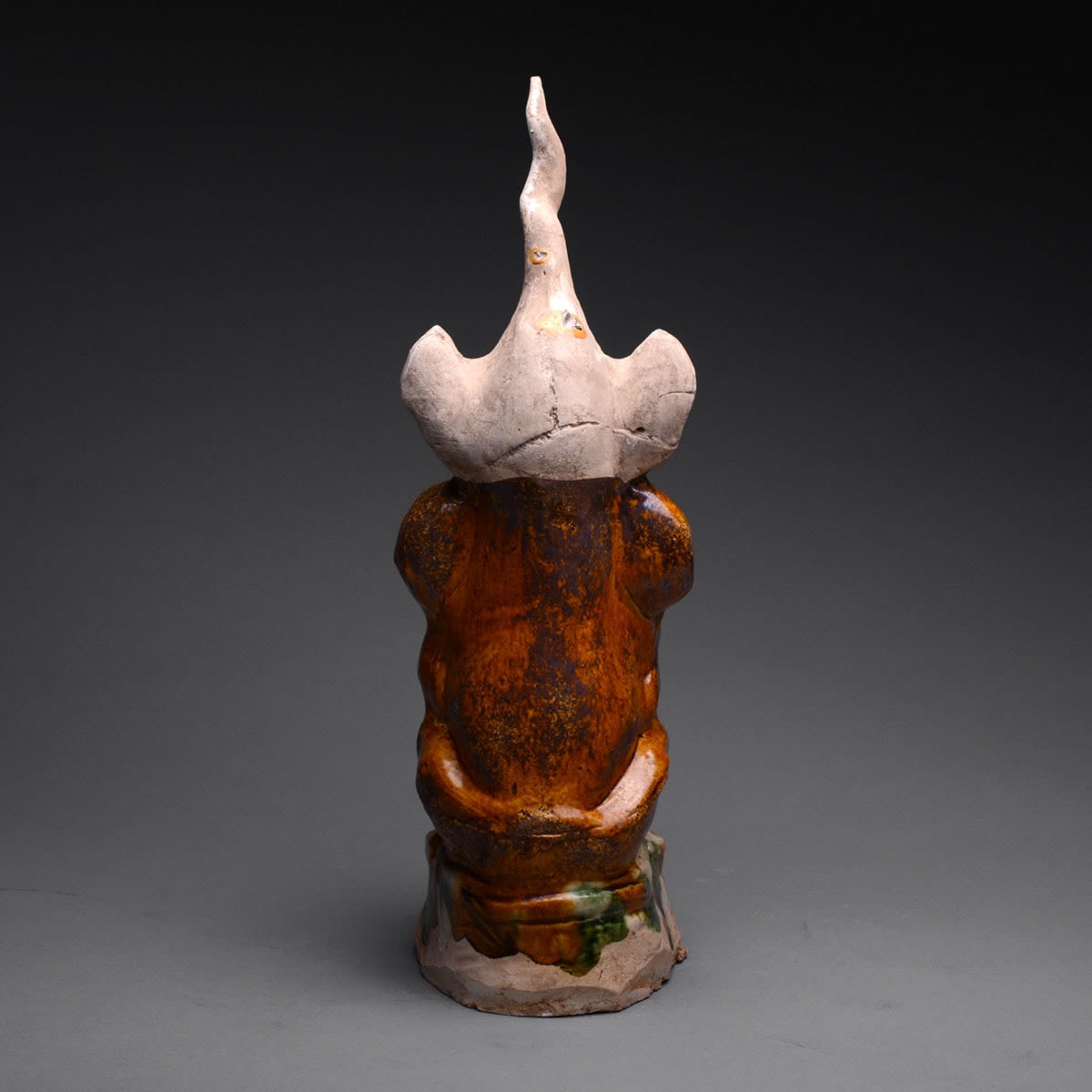Tang Sancai-Glazed Spirit Guardian, 618 CE - 906 CE
Glazed Terracotta
height 36.2 cm
height 14 1/4 in
height 14 1/4 in
H.990
Further images
Originating during the Six Dynasties period (222-589 A.D.), this type of figure is known as a spirit guardian; for traditionally, a pair always stood guard at the tombs of Chinese...
Originating during the Six Dynasties period (222-589 A.D.), this type of figure is known as a spirit guardian; for traditionally, a pair always stood guard at the tombs of Chinese rulers. Generally, both of the figures are mythological composite creatures; one an amalgamation of various animals while the other a combination of human and animal traits, as is the case for this splendid example. This guardian is part of a broader category of Chinese art known as mingqi. Mingqi were any variety of objects specifically created for interment in the tombs of elite individuals in order to provide for the afterlife. This guardian was interred along with his lost companion in order to ward off potential tomb robbers or otherworldly evil spirits that might try to infiltrate the tomb. This mythological beast combines the body of an ox, complete with hooves, with the bearded head of a man. A coiled horn emerges from the center of his head and contributes to the protective nature of the beast. The work is covered in a gorgeous tri-colored sancai glaze that seems to imitate the spotted coats and stripped hides of certain exotic animals. Although this work is supposed to frighten and intimidate us, the delicate sculpting of the horned head and the gorgeous colors of the sancai glaze prove more attractive than repelling.







